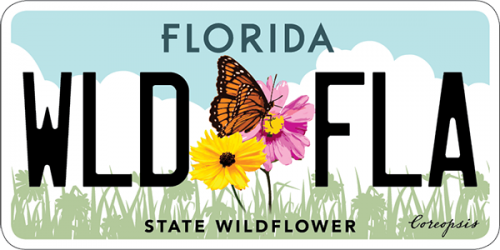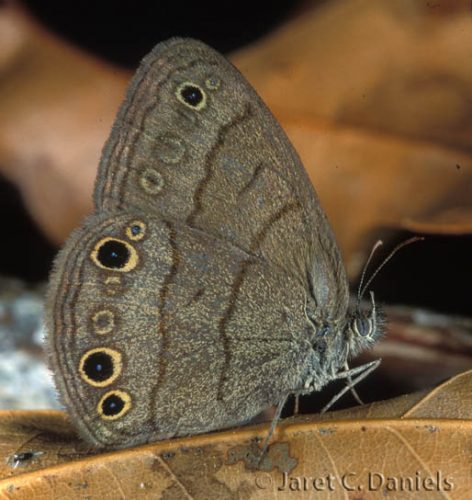- Family name: Nymphalidae/Brush-Footed Butterflies
- General description: Wings unmarked brown above; ventral hindwing brown with two irregular dark brown lines down the center and a row of yellow-rimmed black eyespots along the outer margin.
- Field Marks: Ventral hindwing with a row of yellow-rimmed black eyespots along the outer margin.
- Sexes: appear similar
- Wingspan: 32-39 mm
- Life Cycle: Egg: light green, laid singly on host leaves Mature larva: Green with numerous tiny pale spots and two short tails on the rear. Chrysalis: Green
- Number of Generations: 3 or more per year
- Flight Season: All
- Abundance: Common to abundant
- Habitat: Swamps, woodlands, forest margins, wooded lots
- Counties:
- Larval Host Plants: Various grasses
- Similar Species:
- Additional Information: Range is limited in Maryland, Pennsylvania, Kansas, Missouri, and Ohio. Florida’s most abundant satyr. Adults scurry low to the ground with a weak, somewhat bobbing flight. Adults occasionally visit flowers.
 The Florida Wildflowers & Butterflies projects at the Florida Museum are sponsored in part by the State of Florida and the Florida Wildflower Foundation, Inc.
The Florida Wildflowers & Butterflies projects at the Florida Museum are sponsored in part by the State of Florida and the Florida Wildflower Foundation, Inc.
